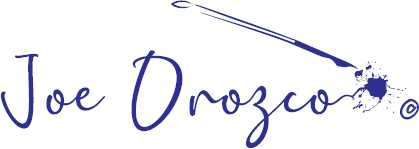How to Write Resumes that Get Interviews
Landing a job interview can be an exercise in patience and fortitude. Job seekers find themselves submitting dozens of applications–sometimes slaving for hours over a single packet only to receive an indifferent rejection, assuming that the employer even bothers responding.
Where is the line between getting passed up because you are not qualified and getting passed up because you did not adequately present your qualifications?
Let’s examine the résumé, arguably the most critical application component, and some ways you might consider building it up to land yourself an interview.
Let me emphasize that point. Your job at this stage is not to get the job. Your single purpose at this stage is to get an interview.
Also, after you read this post, check out my thoughts on cover letters.
Consider the Presentation
By contemporary standards you are no longer bound to showcasing your talents on a single page. Remember two points though: first, make sure that entries are not broken across multiple pages; and second, only move into the next page if you can cover at least a third of the page. Do not spill into an extra page if what you are adding is not adding value.
If you are physically submitting the résumé, it is preferable to bind the multiple pages using a paper clip. A staple may come loose and tear the paper. The paper itself should be the standard 8.5 x 11 in size and should be heavier than traditional copy paper but does not need to be of fancy stock. You do not need to buy the super-snow-white some designers use to entice customers.
Finally, make sure that your font is legible. Do not use anything smaller than 9 points for sans-serifed type and 10 points for serifed type. Use a laser printer to print in 100% black.
Consider Your Audience
Your résumé could be addressing two potential audiences. First, you may be writing to computerized applicant tracking systems (ATS). These are the highly sophisticated gatekeepers that weigh your qualifications based on the active keywords and relevant phrases you supply. If the data is good enough, you move on to your second audience of humans who are not as sophisticated but no less eager in their pursuit of the best applicants.
Whether your résumé hits one or both of these reviewers, rest assured you generally have 30 seconds or less to leave a good impression.
If your résumé gets swept up by a computerized system, do not forget that the ATS is intelligent and boasts a memory far longer than any human. You should not apply for multiple positions within a short period of time. Also, do not attempt to reapply using a different e-mail address since some systems are trained to pick up on duplicate records.
Use active keywords that mirror the language in the job posting, and note that these systems usually feature contextual analysis. it Is not enough to drop strategic keywords without descriptive text showing your competence with the task.
Stay away from abbreviations like “Mgr.” Instead, use “manager” since there is no way of telling how the ATS has been programmed to process language. Similarly, make sure words are spelled correctly, since misspelled words will prevent you from obtaining a higher ranking.
Do not use logos or other graphics in your draft as this may unnecessarily confuse the ATS.
You are most likely to encounter computerized systems while using online applications. Yet, do not assume that e-mail résumés will not in turn be fed into an ATS for analysis. When in doubt, do not send your résumé as an attachment. Rather, paste it into the body of an e-mail and avoid using exclamation marks and special characters to emphasize points in your text.
If you email your résumé, please make sure you follow the employer’s instructions on subject lines. They could be using message rules to filter incoming applications. Make sure your email gets into the right pile.
Résumé Types and General Structure
There are several types of résumé formats: chronological, functional, combination, or targeted. Where as the chronological résumé emphasizes your work history, the functional résumé spotlights your special skills. This latter format is useful for persons changing careers or students fresh out of school. The combination résumé strikes a balance between highlighting your talents and work history. Often, applicants use their résumés to outline everything they’ve ever done and exhibit all their noteworthy talents, but the targeted résumé is designed in a way to highlight only those skills and previous positions that specifically pertain to the position for which you are applying. Regardless of your choice of formats, there are some core guidelines:
Make sure that your name and contact information are in the top section of the first page and not as part of the header or footer, which may complicate things for the electronic gatekeepers.
Remember to number your pages if you are going beyond a single page. The page numbers may be printed in the header or footer along with your full name.
The use of objectives is outdated. By using a specified objective you run the risk of boxing yourself into an area that may or may not fit into the recruiter’s notion of the ideal candidate.
Instead, use a section dedicated to special skills or an executive summary that offers a preview of the areas in which you have excelled. Use the section to highlight marketable and specific abilities. Saying you are a nice person and get along well with others is commendable but is not as compelling as pointing out that you work well with others to meet tight deadlines. Likewise, pointing out your comfort with technology is not as persuasive as outlining the fact that you are an advanced user of Excel, PowerPoint, WordPress, Adobe, etc.
Do not overlook community experience in your work history. Volunteer service can provide as much substance as a paid position and should be captured in your working draft, especially if you played a leading role in the delivery of a project.
If the various ATS love keywords, humans are especially obsessed with quantitative evidence. Include as many numbers as you can generate–whether this is the amount of money you raised or saved, the number of people you managed, the number of products you sold, etc. Each job entry should emphasize how many, how much, how often, how big, how fast, how well, and so on. These points should target the benefit you brought to your employer and ought to be listed in order of most impressive to least impressive.
In your education section, be strategic about what you display. Grade point averages should only be exhibited if they are competitive. You may use your degree’s GPA instead of your cumulative GPA, but make sure this is specified. Only outline your relevant coursework if you are relying on a functional résumé with a weak work history.
In all sections, eliminate all personal pronouns.
Get rid of redundant phrases and useless words like “that” or “which” where possible.
Use varying line lengths, because the résumé should be as informative as it is visually aesthetic.
With respect to formatting, do not use unnecessary styles to draw attention. Other than the position title, you need not use bolding or italics to highlight specific points in your responsibilities.
Do not use unnecessary special characters that may not translate well to an employer’s computer system.
Final Thoughts
Résumés are considered the most critical application component because it is the document that is often reviewed before anything else. Your cover letter and application responses all hinge on this central snapshot of your professional aptitude, so it only makes sense that you have someone unbiased review your first draft to make sure things are properly aligned and formatted and generally looks clean. It is good practice to have someone review your document anyway since only an outsider’s prospective will pick up on weaknesses you may have overlooked.
Why should the résumé only aim for landing an interview and not the job?
There is no such thing as a perfect résumé. A résumé is only as good as the qualifications that make it stand out according to subjective human opinions. A good résumé is typically accompanied by a strong cover letter that extends on some of the major points for which the résumé only offers a preview, but even then you are only counting on these documents to earn the opportunity to sell yourself in person.
Finding a job is a job unto itself, and an efficient job is about focusing on explicit goals. For the moment, your goal is to literally get your foot in the door. If you do, your next goal will be ensuring your other foot joins the first and that both are offered the opportunity to stay there.
What would you add to creating an effective résumé?



